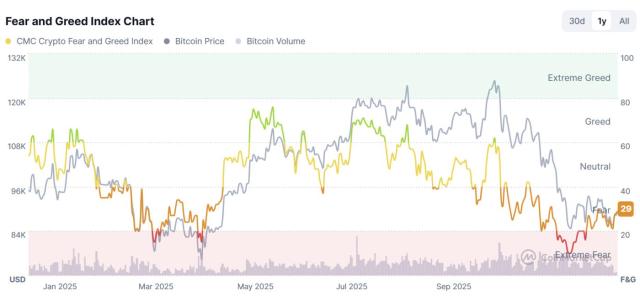Another $1.5 billion in cryptocurrency stolen: How did North Korea train world-class hackers?
This article is machine translated
Show original
In the new era where keyboards replace missiles, the keyboards of young hackers will become the Sword of Damocles for Bit cryptocurrencies.
On February 21, the Bit cryptocurrency exchange Bybit suffered a $1.5 billion hacking incident, once again putting the spotlight on the North Korean hacker group Lazarus Group.
In recent years, this organization has repeatedly succeeded, from stealing from the KuCoin Bit exchange to the theft of the Ronin cross-chain bridge, and even the hacking of the personal wallet of the founder of Defiance Capital, with the mysterious hacker organization behind the scenes.
You may be curious, as a globally closed country, how has North Korea cultivated such an amazing force on the digital battlefield?
In the traditional military field, North Korea is difficult to withstand the US-South Korea alliance, but cyber warfare provides it with a "four-two-one" strategic leverage.
So since the 1980s, the North Korean government has spent a lot of effort on hacker training, with an internal code-named "Secret War".
Jang Se-yul, a North Korean who defected to South Korea in 2007, previously studied at Mirim University (now renamed the University of Automation), North Korea's top engineering school. During his university years, Jang had taken 121 courses set up by other hackers.
After graduation, Jang joined the North Korean government's reconnaissance bureau, and 121 Bureau was an elite spy agency under it. It was then that he began to get in touch with the top hackers in 121 Bureau.
Jang Se-yul later told Business Insider that compared to North Korea's nuclear threat, its cyber warfare threat is more real and more dangerous. He said, "This is a silent war. The war has already begun without a single shot fired."
The question is, how can such a poor and resource-poor country make such a big effort in cyber warfare?
Jang Se-yul's answer is: Because training a hacker is very cheap.
Normally, North Korea is divided into three major strata: the basic masses (the core stratum), the complex masses (the ordinary middle stratum), and the remnants of the hostile class (the descendants of landlords, rich peasants, etc.), which are further divided into 56 strata. These stratification classifications are recorded in the resident ledger and used in the cadre recruitment process.
An Zan-il, chairman of the World Institute for North Korean Studies, said that in the past, North Korean hackers also had to look at their family background, because if their loyalty to the party declined, they would pose a threat to the system.
Until later, when the international community imposed comprehensive sanctions on North Korea, and North Korea's channels for earning foreign exchange were blocked, it could only illegally earn foreign exchange through cyber attacks.
This has also opened up a special channel for cyber warfare talents, recruiting talents without distinction.
Jang's alma mater, the University of Automation, is the core base for cultivating North Korean hackers. He said, "Each class only admits 100 students, but there are as many as 5,000 applicants."
It can be said that this is the PLUS version of the college entrance examination. Once the application is successful and they become hackers, they can become the top 1% of North Korea, but the process is also extremely arduous.
Before these young hackers graduate, they have to undergo nearly 9 years of rigorous training, with the youngest starting at the age of 17.
At school, they take six classes a day, 90 minutes per class, learning various programming languages and operating systems. They spend a lot of time analyzing Microsoft's Windows operating system and other programs, studying how to break into the computer information systems of enemy countries such as the United States and South Korea.
In addition, their core task is to develop their own hacker programs and computer viruses, without relying on existing hacker programs outside.
In Jang's view, North Korean hackers are no less technically proficient than top programmers at Google or the CIA, and may even be better.
From the first day of their education, these "hacker cadets" are given a mission and goal, and are divided into different groups to focus on attacking different countries and regions, such as the United States, North Korea, and Japan. Once a hacker is assigned to a specific "country group", they will spend nearly two years undercover in that country, learning the local language and cultural knowledge, so that they will not be exposed even beyond their technical skills.
Jang said that one of his friends works for an overseas department of the 121 Bureau, but he is outwardly an employee of a North Korean trading company. No one knows his true identity, and his company is also operating a normal business.
Due to the special nature of cyber warfare, these young hackers can freely use the Internet, be the first to grasp the latest developments abroad, and also deeply know that their country is "closed and conservative", but this will not shake their patriotism and loyalty to the leader.
"Even if someone forces them to persuade them, or even offers them a job at the South Korean presidential office, they will not betray their country," Jang said.
Of course, once they become hackers, it also means money and privileges.
Young hackers can earn a monthly salary of $2,000, twice that of an overseas ambassador. In addition, they can also get a luxury apartment of over 185 square meters in the center of Pyongyang, and can also relocate their families to the capital, which are undoubtedly extremely tempting conditions.
In the new era where keyboards replace missiles, the keyboards of young hackers will become the Sword of Damocles for Bit cryptocurrencies.

Source
Disclaimer: The content above is only the author's opinion which does not represent any position of Followin, and is not intended as, and shall not be understood or construed as, investment advice from Followin.
Like
Add to Favorites
Comments
Share







